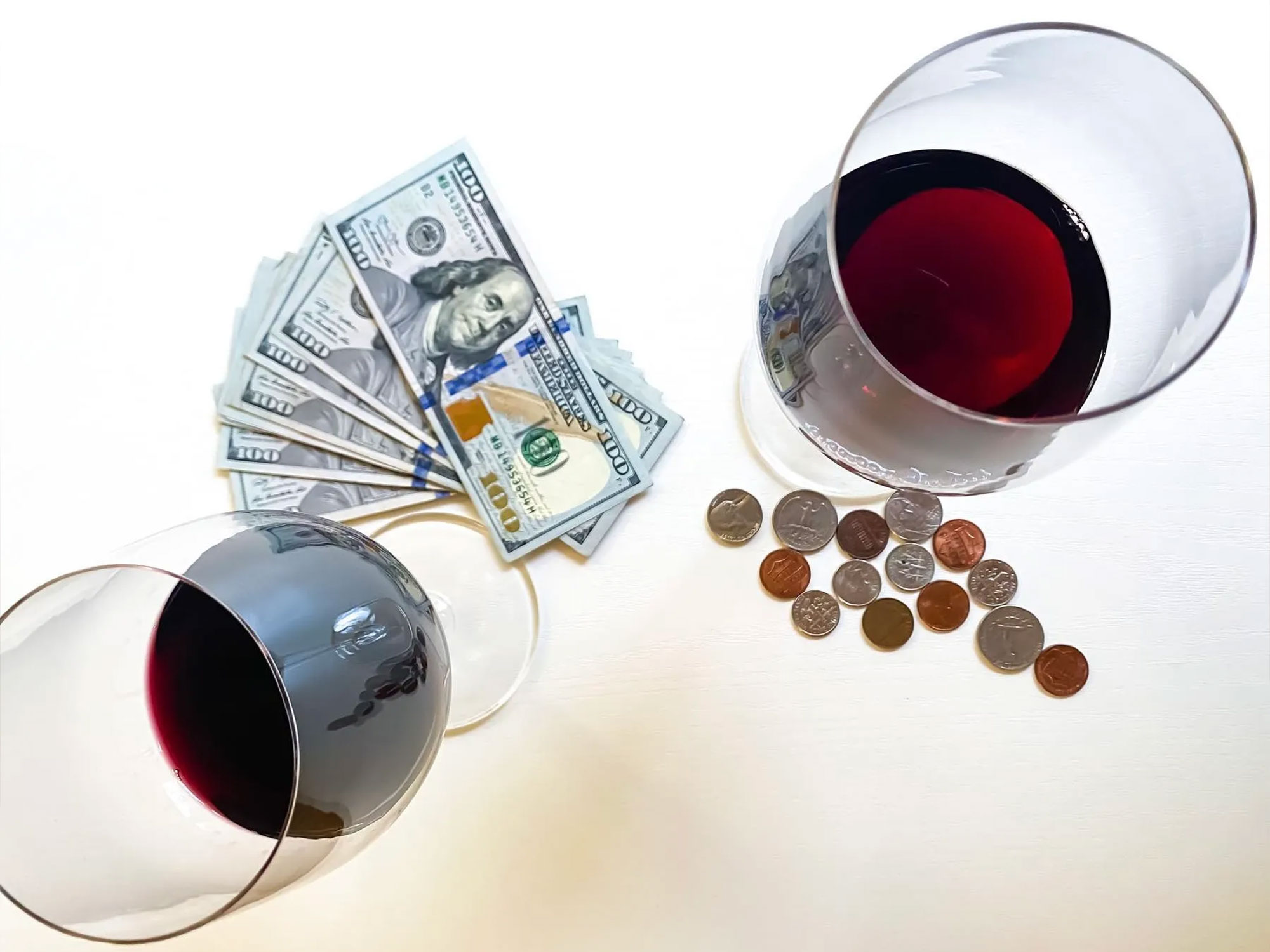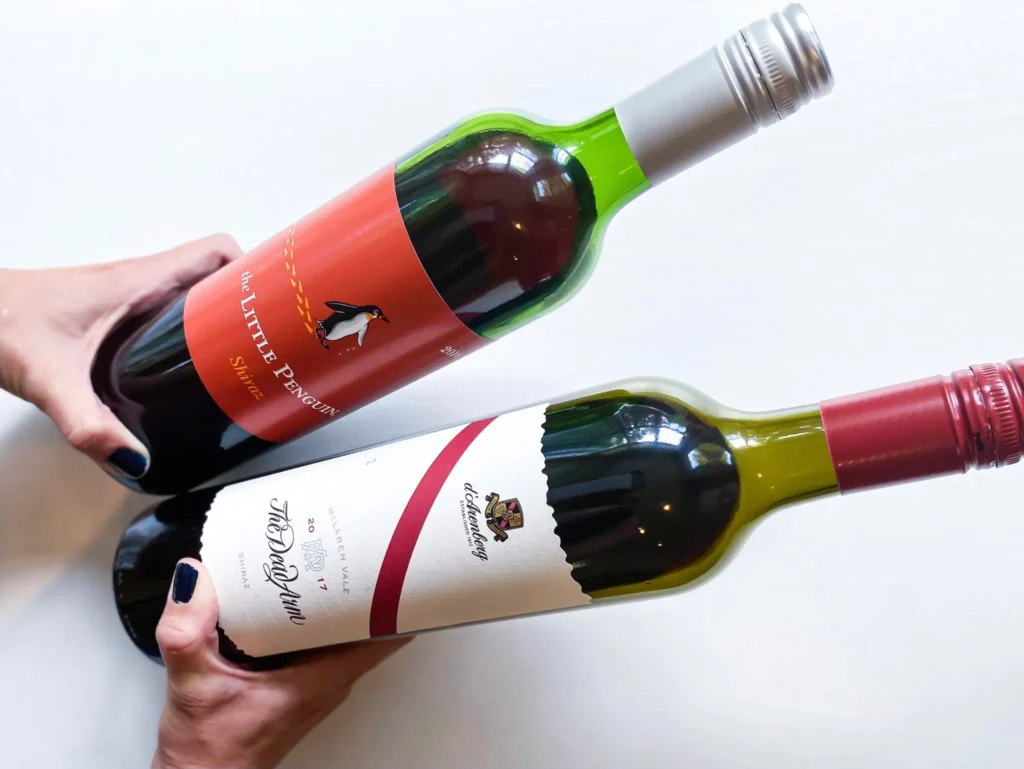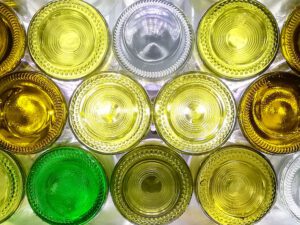
The Virginia Wine Tasting Guide
Discover Virginia’s thriving wine scene, featuring over 300 wineries, diverse varietals, and scenic tasting experiences just a short drive from Washington, D.C.

What makes expensive wines different than inexpensive wines? That is the “million-dollar” question. (I get asked often!)
This month I lined up a $6 Shiraz vs a $50 Shiraz to point out some pretty common benchmarks (things to look out for) when tasting a ‘bargain’ wine vs a generally ‘pricey’ wine!
($60 might be ‘cheap’ for some, however, I picked these wines to be relatable and accessible)
Here are some things to look for when comparing:


🚫 1. SWEET wines don’t always = cheap wines
Some of the most sought-after, age-worthy, expensive wines are sweet!
$$$ Examples: Sauternes, Tokaji, German Riesling
What leads to this misconception is many bulk wines are made with lesser quality grapes that don’t have as much flavor concentration, so producers may add sweeteners such as RCGM (rectified concentrated grape must) to make the wine feel “fuller” and appear “richer”
🚫 2. SCREW CAP wines don’t always = cheap wines
There is a fair share of high-end screwcap bottles that are finally starting to circulate the globe and appear on restaurant lists!
$$$ Examples: Australian (Shiraz, Cabernet, Riesling), New Zealand Pinot Noir, German Riesling, Austrian wines
What leads to this misconception is the majority of cheap mass-produced wines that you will see in US grocery stores are often screwcap …which gives the illusion that all wines under screw cap must, in fact, be less quality
🚫 3. BLENDS don’t always = cheap wines
Blending varieties creates consistency and reliability which has led to some of the finest, balanced and most age-worthy wines in the world! Some famous regions in France such as Bordeaux produce blends almost exclusively!
$$$ Examples: Bordeaux, Rhone Valley, Tuscany (Super Tuscans), Rioja
What leads to this misconception is that in years past, “jug wines” made up a majority of blends sold in the U.S. giving the impression that most blends must be less quality
Even though many inexpensive wines are not typically age-worthy, they can STILL be quality for that particular style. The general pointers above don’t necessarily mean a wine is good or bad (that’s subjective)!
Keep buying what you like. I have plenty of inexpensive wines that I love!
My favorite value wines and regions include: Vinho Verde, Spanish white wines, Austrian reds like Blaufrankisch + Zweigelt, South African red blends, Italian Barbera + Dolcetto, + Cremant d’Alsace sparkling!


Discover Virginia’s thriving wine scene, featuring over 300 wineries, diverse varietals, and scenic tasting experiences just a short drive from Washington, D.C.

Discover how wine bottles evolved from fragile glass to iconic shapes, and how packaging influences perception, preservation, and the modern wine experience.

Explore how biodynamic farming integrates lunar cycles, cosmic rhythms, and holistic vineyard practices to produce wines that reflect a deep connection to nature.
No matter your current skill level, we can help you improve – pass that exam, share your wine knowledge with others, guide your buyers, enhance your guests’ experience, and show up with confidence and credibility as a wine professional!
Feeling overwhelmed by everything there is to study in wine?
Struggling to stay consistent with tasting, or make it feel purposeful?
Craving connection with others who get what you’re working toward?
Let’s make studying wine less overwhelming, more consistent, and fully enjoyable!
Enter your email below to join our wine newsletter, where we share expert tips, study tools, tasting insights, and updates to support you on your wine journey!
By submitting, you are consenting to receive marketing emails from The Grape Grind. You can unsubscribe at any time.
Want to get better at tasting wine?